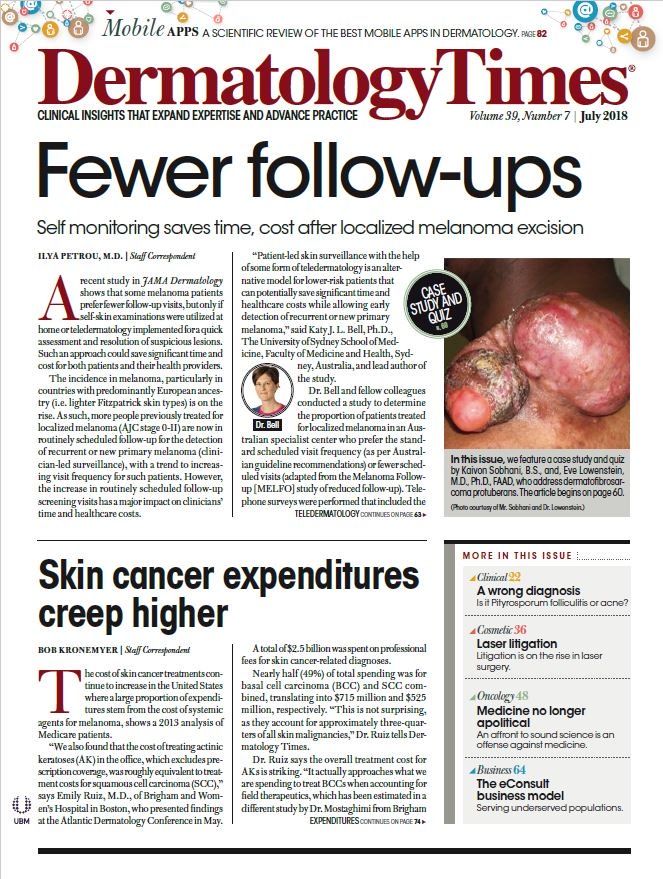- Acne
- Actinic Keratosis
- Aesthetics
- Alopecia
- Atopic Dermatitis
- Buy-and-Bill
- COVID-19
- Case-Based Roundtable
- Chronic Hand Eczema
- Chronic Spontaneous Urticaria
- Drug Watch
- Eczema
- General Dermatology
- Hidradenitis Suppurativa
- Melasma
- NP and PA
- Pediatric Dermatology
- Pigmentary Disorders
- Practice Management
- Precision Medicine and Biologics
- Prurigo Nodularis
- Psoriasis
- Psoriatic Arthritis
- Rare Disease
- Rosacea
- Skin Cancer
- Vitiligo
- Wound Care
Publication
Article
Dermatology Times
Pricing patients out of healthcare?
Author(s):
Patients are being victimized by the high cost of drug therapy. "We can help them by prescribing less expensive drugs and by guiding them to the least expensive places to purchase them," says Dr. Norman Levine.
What can we do about high drug prices, asks Dr. Levine in this issue of Dermatology Times. “Some physicians have ... stopped caring for patients who require expensive medication.” (©Rabbitti/Shutterstock.com)

Dr. Levine

We are all well aware of the disastrous turn of events in the past 5 years with regard to the rising cost of medications. What were once $4.00 specials at Wal-Mart now cost $50.00 or more. Patients with significant but imminently treatable skin disorders go without therapy for financial reasons alone. Limited third-party payer formularies, high deductibles and copays drive many to cheap home remedies or to weird nostrums advertised on late night television.
Some physicians have acquiesced to what they see as the reality of modern healthcare and have stopped caring for patients who require expensive medication. One young dermatologist related that some of his former co-residents have decided to stop writing prescriptions altogether. I suspect that they are avoiding the hassle of fighting with insurance companies to get prior authorization for necessary medications and answering phone calls from irate patients complaining about unaffordable therapies.
This is a sad state of affairs for me. What we do well as dermatologists is largely predicated on using myriad topical and systemic medications to relieve or even cure skin diseases. Yes, we are also surgeons, dermatopathologists and cosmetic dermatologists, but we were trained to relieve suffering with medications. If that practice stops, dermatology will have little reason to exist.
In a 2015 Dermatology Times editorial, I touched on general principles of reducing costs for patients. In the following, I will update this discussion about what we can do to provide effective and reasonably affordable medical care.
Prices of generic drugs have skyrocketed over the past 3-5 years, but they remain a bargain compared to name-brand medications. If there is a generic equivalent, there is no reason to prescribe the branded drug, with very few exceptions. There is virtually no published data to support that notion that generic drugs do not work as well as branded medications.
Discount coupons are sometimes available for otherwise overpriced name-brand drugs. With these coupons, patients with commercial insurance may have little or no copays. I have several objections to these coupons:
• Many of my patients who try to use them are denied the discount for whatever reason.
• They cannot be used for patients with government insurance such as Medicare and Medicaid.
• They are often time-limited. I still feel guilty 15 years after continuing some study patients on Enbrel who were provided the drug free of charge for 3 months after the study was completed...but then what?
• Someone winds up paying for these expensive drugs, usually the third-party payer. This is not a free ride and is one reason why everyone’s insurance premiums keep rising.
The costs of medications in the same class can vary widely. By choosing the least expensive alternative, the savings can be substantial. An example is class 1 corticosteroids which are roughly equivalent in potency. A 60 gram tube of clobetasol cream costs approximately $130 while a 50 gram tube of betamethasone diproprionate augmented cream sells for about $54.00. A 60 gram tube of clindamycin 1% cream costs about $60.00, while a 60 ml bottle of clindamycin solution is priced at about $33.00. The combination product containing clindamycin and benzoyl peroxide costs $137.00-$160.00. Using each ingredient separately drops the price to about $40.00.
Price shopping is often an effective way of finding the lowest cost for medications. There are several ways to do this online. I am familiar with two such services, both of which can save one a lot of money. The most familiar to most of us is GoodRX. Anyone is eligible to participate, but if one uses GoodRX it should only be because she lacks an insurance-backed prescription plan or if the copays or deductibles are extremely high. The physician writes the prescription. The patient then searches on the GoodRX web site for the least expensive pharmacy price in the community, then prints a coupon for the selected drug store and is guaranteed a certain price.
For those with a high deductible drug plan, with an expensive copay or with no health insurance coverage, another excellent alternative is Blink Health. After enrolling online, the patient chooses the medication to be filled and the service quotes a price which is often well below retail. If the price is acceptable, the patient pays for the drug on the web site and then is able to fill the prescription at more than 40,000 pharmacies nationwide.
We are all annoyed when third-party payers dictate the algorithm that must be followed in treating some ailments. My most recent frustration came when an insurance carrier insisted that a patient with severe psoriasis who had failed on Humira must first try and fail Enbrel before she could move on to a different class of biologic agent. There are good reasons, however to use a step-wise approach in many dermatoses. In many cases the first step is safer, cheaper and might work well.
Most insurance plans require that a patient with psoriasis try and fail a first line systemic medication such as methotrexate before approving a biologic agent or Otezla. Many practitioners try to game the system by claiming that methotrexate is too toxic to use over the safer biologic agents. If I were a benefits manager, I would respond that the drug wasn’t too toxic when biologics were not yet available. Methotrexate is a pretty effective and fairly safe medication in those with moderate-to-severe psoriasis, and is up to 95% less costly than the average biologic agent.
Our patients are being victimized by the high cost of drug therapy. We can help them by prescribing less expensive drugs and by guiding them to the least expensive places to purchase them.

Newsletter
Like what you’re reading? Subscribe to Dermatology Times for weekly updates on therapies, innovations, and real-world practice tips.

























